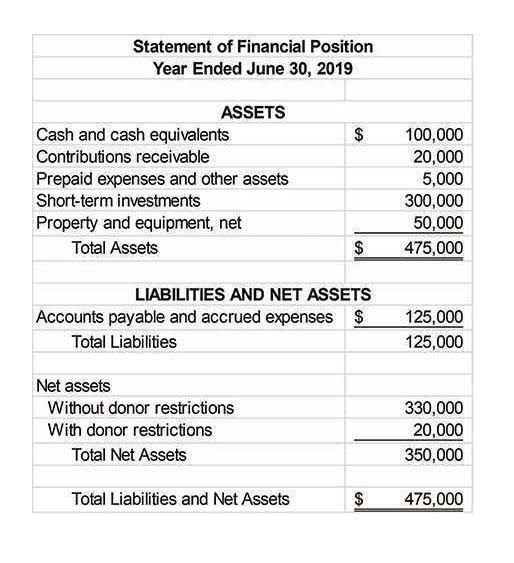Darmowe Spiny Burning Desire Bez Depozytu Klub Sportowy Boa
February 7, 2023Простыми словами: бэкенд, фронтенд и их взаимодействие
February 8, 2023
In summary, permanent accounts hold balances that persist from one period to another. In contrast, temporary accounts capture transactions and activities for a specific period and require resetting to zero with closing entries. Since dividend and withdrawal accounts are not income statement accounts, they do not typically use the income summary account. These accounts are closed directly to retained earnings by recording a credit to the dividend account and a debit to retained earnings. When doing closing entries, try to remember why you are doing them and connect them to the financial statements.

Examples of Temporary Accounts in Accounting

Remember that the periodicity principle states that financial statements should cover a defined period of time, generally one year. A temporary account to which the income statement accounts are closed. This account is then closed to the owner’s capital account or a corporation’s retained earnings account.
- HighRadius has a comprehensive Record to Report suite that revolutionizes your accounting processes, making them more efficient and accurate.
- What did we do with net income when preparing the financial statements?
- On expanding the view of the opening trial balance snapshot, we can view them as temporary accounts, as can be seen in the snapshot below.
- My Accounting Course is a world-class educational resource developed by experts to simplify accounting, finance, & investment analysis topics, so students and professionals can learn and propel their careers.
- The income summary account serves as a temporary account used only during the closing process.
- It is permanent because it is not closed at the end of each accounting period.
Close all expense and loss accounts
- After almost a decade of experience in public accounting, he created MyAccountingCourse.com to help people learn accounting & finance, pass the CPA exam, and start their career.
- Once the temporary accounts are closed to the income summary account, the balances are held there until final closing entries are made.
- By debiting the revenue account and crediting the dividend and expense accounts, the balance of $3,450,000 is credited to retained earnings.
- Closing all temporary accounts to the income summary account leaves an audit trail for accountants to follow.
- To close expenses, we simply credit the expense accounts and debit Income Summary.
You might have heard people call this “closing the books.” Temporary accounts like income and expenses is income summary a temporary account accounts keep track of transactions for a specific period and get closed or reset at the end of the period. This way each accounting period starts with a zero balance in all the temporary accounts, so revenues and expenses are only recorded for current years. At the end of a financial period, the ending balance from the revenue accounts and expense accounts are transferred to the income summary account. The income summary account does not appear on any financial statement. It is a temporary account used to summarize revenues and expenses before transferring the net income or net loss to the retained earnings account on the balance sheet.
How Can HighRadius Help Streamline and Enhance the Management of Income Summary Accounts?
- The four-step method described above works well because it provides a clear audit trail.
- The trial balance above only has one revenue account, Landscaping Revenue.
- For example, salaries, rent expenses, administrative expenses and so much more.
- The purpose of this article is to define the income summary account and look at a helpful overview so that this account becomes less of a mystery.
- So far we have reviewed day-to-day journal entries and adjusting journal entries.
Imagine you own a bakery business, and you’re starting a new financial year on March 1st. All expense accounts are then closed to the income summary account by crediting the expense accounts and debiting income summary. After the closing journal entry, the balance on the dividend account https://www.bookstime.com/ is zero, and the retained earnings account has been reduced by 200. In a sole proprietorship, a drawing account is maintained to record all withdrawals made by the owner.
- This account is a great tool to show the net profit or loss of a company for any financial years.
- The balance in Retained Earnings agrees to the Statement of Retained Earnings and all of the temporary accounts have zero balances.
- In accounting, there are multiple types of accounts classified as assets, liabilities, equity, revenues or expenses.
- You can either close these accounts directly to the retained earnings account or close them to the income summary account.
- At the end of the year, businesses gather all revenue and expenses and place them into an income summary account.
How to Close an Account into Income Summary

In this case, the income summary account has a net credit balance which means that the company has a net income of $5 million. To close the drawing account to the capital account, we credit the drawing account and debit the capital account. To close expenses, https://www.facebook.com/BooksTimeInc/ we simply credit the expense accounts and debit Income Summary. As you will see later, Income Summary is eventually closed to capital.
What are the Chart of Accounts in Accounting? (Simple)

Notice that the balance of the Income Summary account is actually the net income for the period. Remember that net income is equal to all income minus all expenses. Now for this step, we need to get the balance of the Income Summary account. In step 1, we credited it for $9,850 and debited it in step 2 for $8,790. In this blog, we will discuss the income summary account in detail and understand how to calculate it with some real-world examples.
